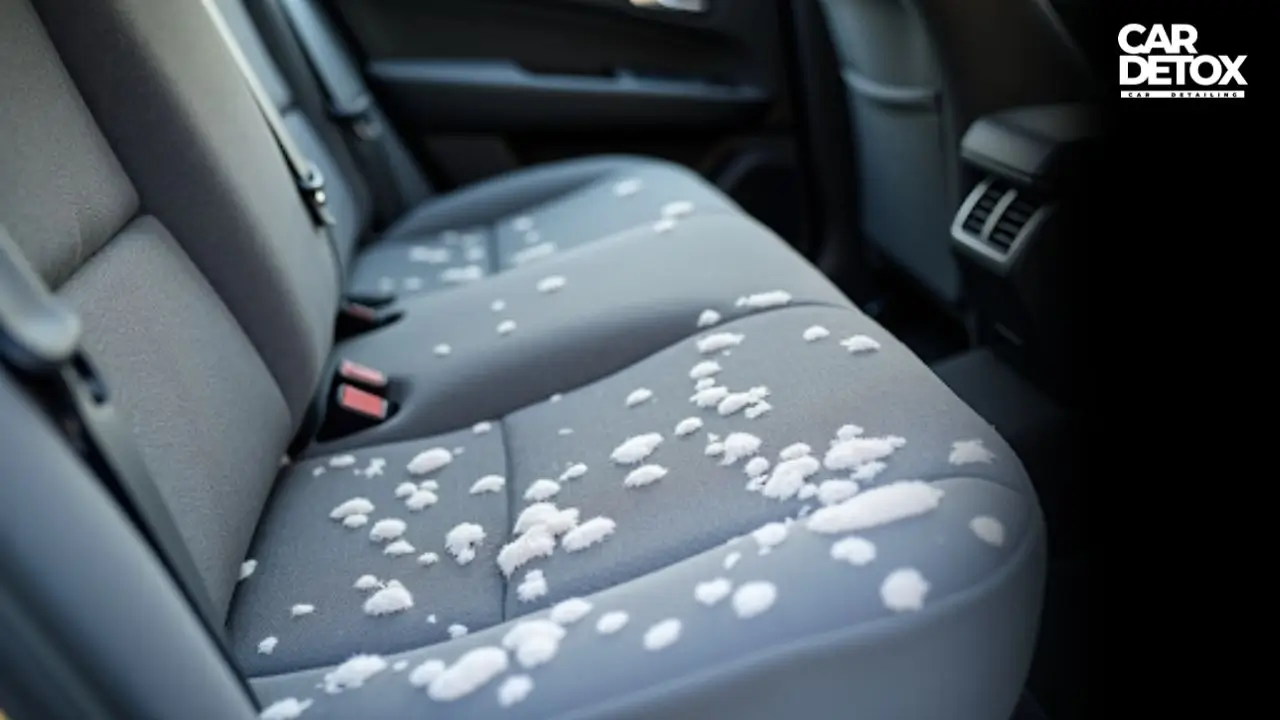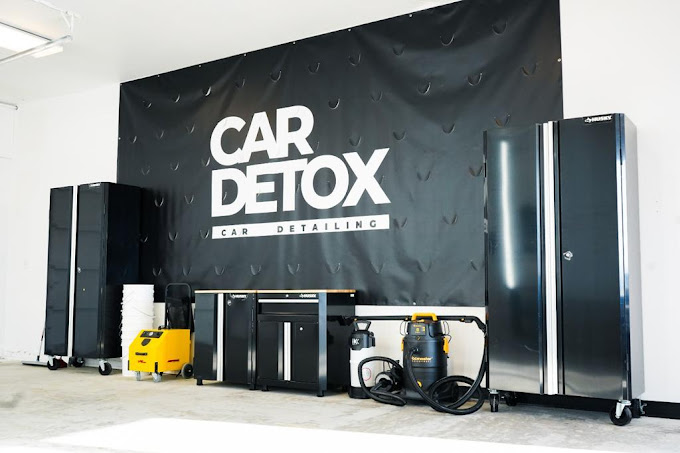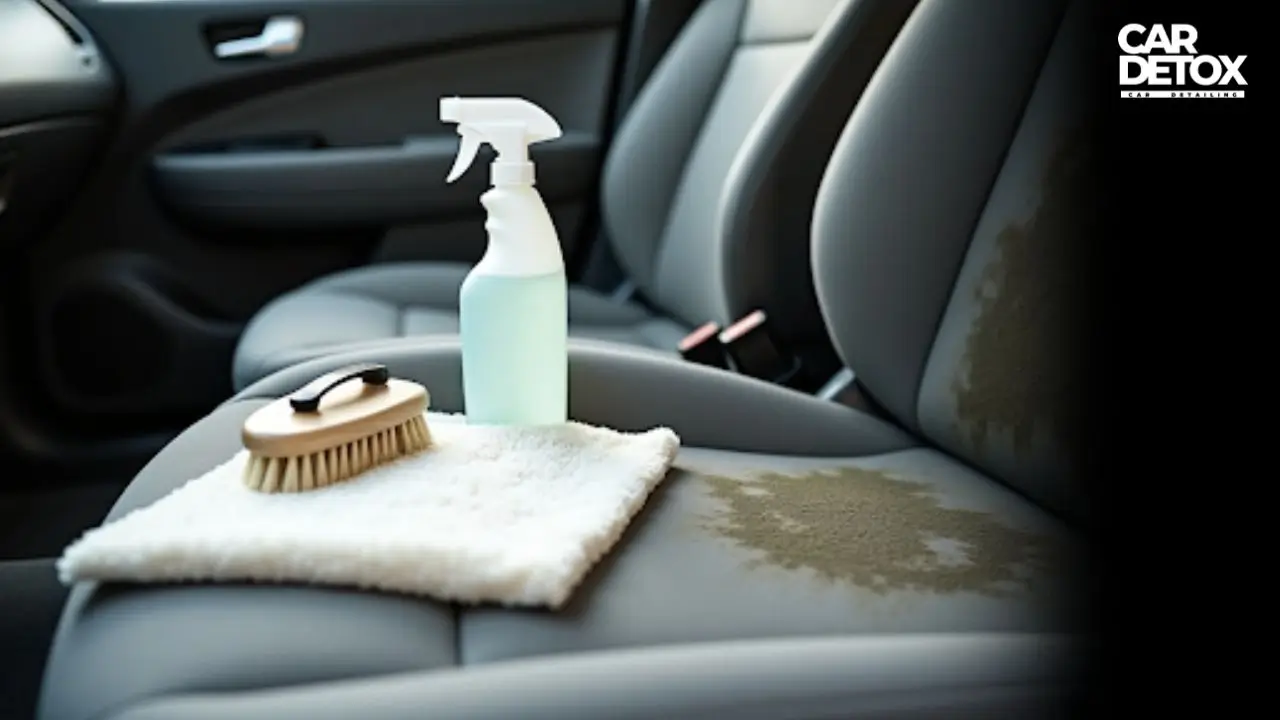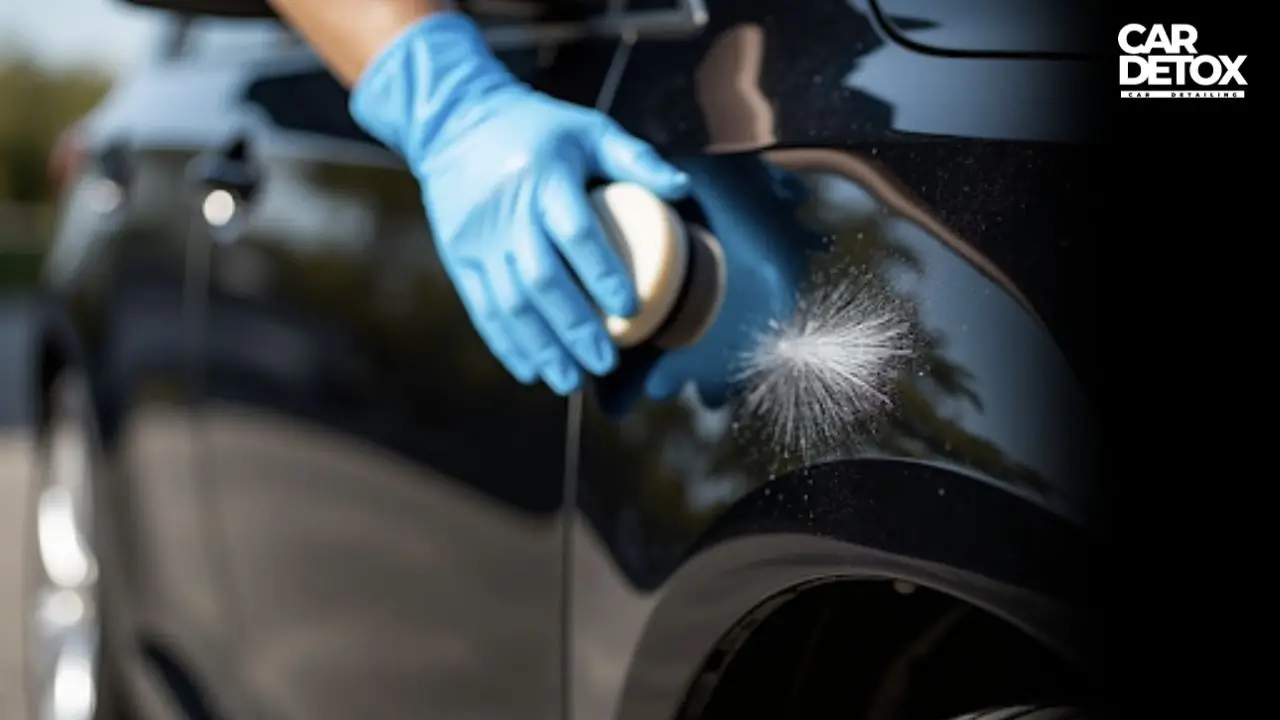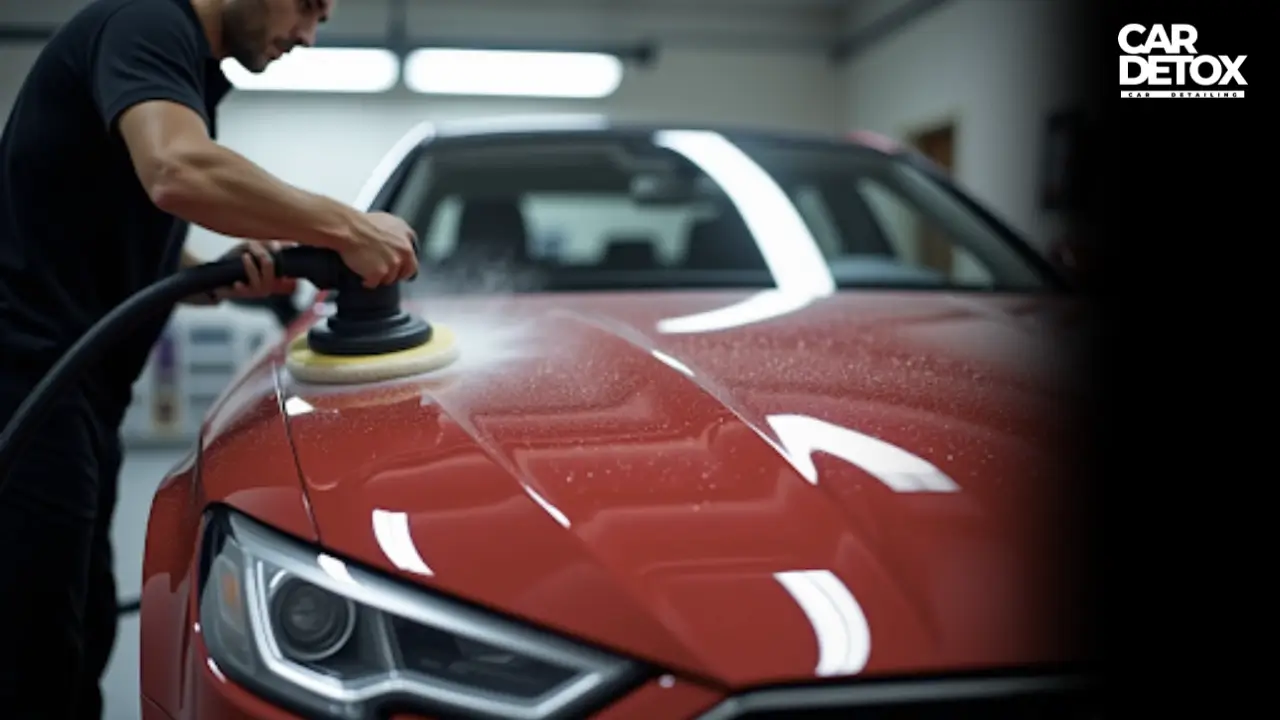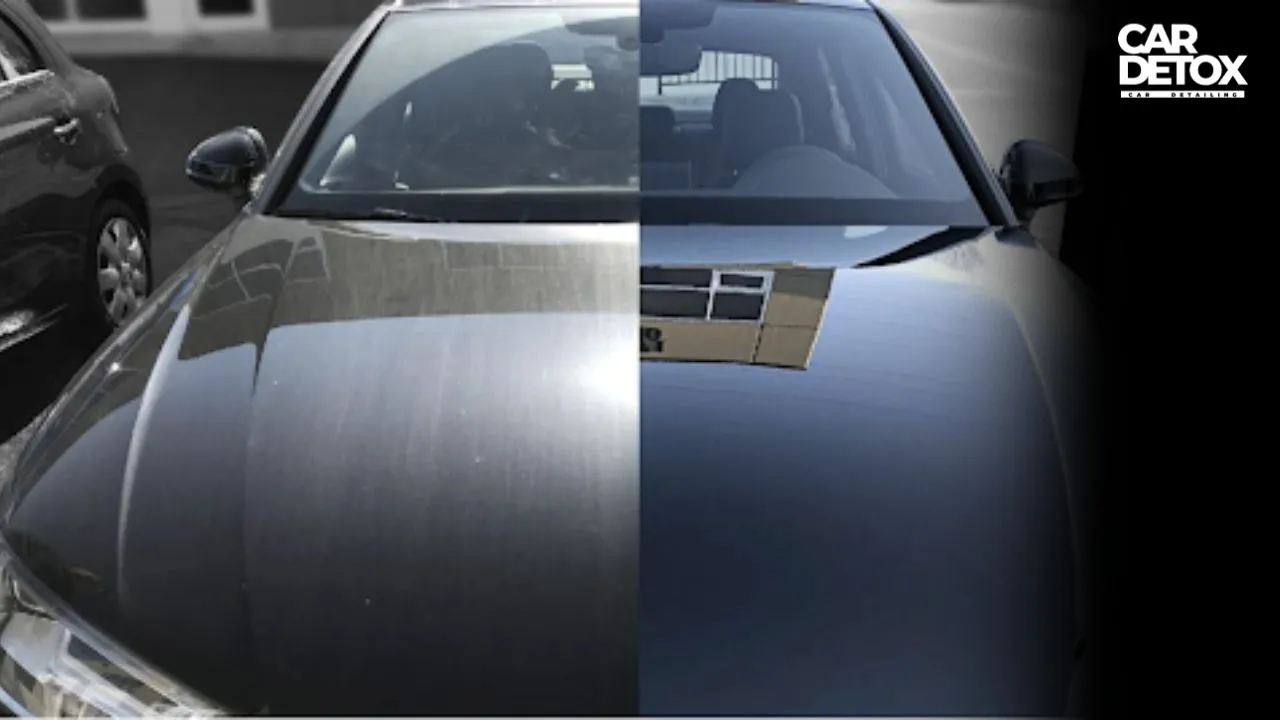White mold in car interiors poses serious health risks beyond its unsightly appearance. Passengers might experience allergies, respiratory problems, and asthma attacks. This powdery fungal growth thrives in damp, humid environments and spreads faster through your vehicle's confined space.
White spots appear on car interior surfaces when owners leave windows open during rain or face leaks from sunroofs and damaged seals. Your car's warm temperature, combined with moisture, creates ideal conditions for white mold to grow in upholstery and carpets. On top of that, it often announces its presence with musty odors before visible signs appear.
You won't need professional help to remove white mold from your vehicle in most cases. In this piece, we'll show you how to identify white mold in car carpet and clean your car's interior effectively. You'll also learn about the mechanisms behind mold growth and prevention strategies to keep it from coming back. Dealing with stubborn white mold? Let Car Detox deep-clean and sanitize your interior for a fresh, healthy ride.
What Causes White Mold in Cars
Your battle against white mold in your car starts by learning why it happens. Mold runs on three basic conditions that wet: moisture, warmth, and organic material. These conditions exist naturally in your car's interior.
Common sources of moisture inside vehicles
Your vehicle gets moisture from many places. Water mostly sneaks in through leaky seals around windows, doors, or sunroofs. So these leaks create damp spots where mold can grow freely.
Daily activities add substantial moisture to your car's interior. Wet clothes, umbrellas, or shoes bring water that gets stuck in your car's upholstery and carpeting. Spilled drinks also soak deep into fabrics and foam padding. These create hidden wet spots that might never dry properly.
Your car windows and windshields show condensation when warm, moist air touches cooler surfaces. This happens often with temperature differences between your car's inside and outside.
Why white mold grows on car carpet and upholstery
Your car's interior gives white mold the perfect home. Car seats and carpets work like sponges. They soak up moisture and stay dark - exactly what mold needs to grow. Your car's upholstery materials trap moisture deep in their fibers and create hidden breeding spots.
White mold grows best in spots you rarely clean, especially when you have neglected areas. The space under seats, door bins, and inside seat padding becomes a perfect spot for mold to grow undisturbed.
How humidity and organic material contribute
High humidity levels accelerate mold growth, whether from weather or poor airflow. Cars parked with closed windows trap humid air and become tiny greenhouses for mold spores.
Organic materials are everywhere in cars and feed the mold. Food crumbs, skin cells, dust, and your car's interior's natural fibers become food sources. Your body oils and bacteria from regular use add to microbial growth over time.
Your AC system can make mold problems worse. Broken units might fail to control humidity or leak extra moisture through vents. This lets mold grow inside the ventilation system.
How to Identify White Mold in Your Car
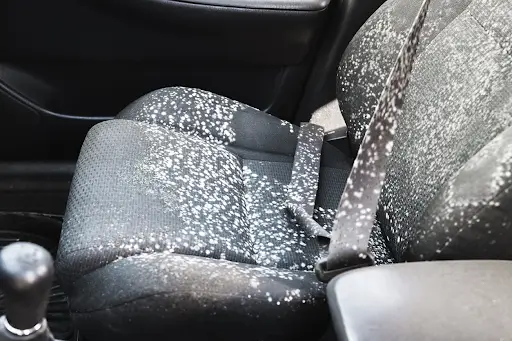
The sooner you spot white mold, the easier it becomes to get rid of it. Mold can affect your car's looks and your health, so you need to know what signs to watch for.
White spots on the car interior: what to look for
White mold starts as what looks like a thin dust layer on your car's surfaces. Unlike regular dust, this white substance shows up in circular patterns, especially on dark upholstery, where you can see it better. You'll notice a powdery residue or white patches that stick to surfaces instead of just sitting there. Dark seats often show these white stains in clear circular patterns that won't simply brush away.
People sometimes mix up white mold with salt stains, which look similar when sweat or saltwater dries on upholstery. The main difference is that salt stains go away with cleaning, but mold keeps coming back until you fix the moisture problem. White mold doesn’t just look bad—it affects air quality too. Trust Car Detox for safe, professional interior restoration
Musty smells and allergy symptoms
Your nose usually catches mold before your eyes do. A musty smell that won't go away - like old books or a damp basement - points to hidden mold growth, even if you can't see it yet. The smell hits you right away when you open your car after it sits for hours.
Your body might tell you mold exists. Sudden sneezing, coughing, watery eyes, or breathing problems that only happen in your car could mean mold spores float around in this small space. These reactions tend to get worse during long drives as you breathe in more spores.
Where mold hides: seats, carpets, vents
Mold stays hidden in many spots even after a good look:
- Under seats and floor mats where spills seep through
- Inside seat padding and cushions, where moisture gets trapped
- Around window seals and door panels, where leaks occur
- In air conditioning vents where condensation accumulates
- Inside the trunk and spare tire wells after rain exposure
- Behind glove boxes and storage compartments
A look at corner areas and under carpeting shows more hiding spots where moisture stays longest without air movement or sunlight.
Step-by-Step: How to Remove White Mold from a Car
Getting rid of white mold needs good prep work and a step-by-step cleaning process. You'll need to spot that fuzzy growth first, then follow these steps to get it out of your car's interior.
Wear protective gear before starting.
Your safety comes first, so put on the right protective gear. Rubber gloves will keep your hands safe from mold and cleaning products. A NIOSH-approved N95 respirator mask will protect you from breathing in mold spores that can harm your lungs. You should also wear sealed goggles to shield your eyes and cover up with long sleeves and pants to keep your skin protected.
Dry out the car completely.
Start by parking your car in direct sunlight and open up all doors and windows. This creates air movement that helps dry out those damp spots where mold likes to grow. You can speed things up by setting up fans around your car or using a dehumidifier to pull out extra moisture.
Vacuum and clean visible mold
After the interior dries out, vacuum every surface with a HEPA-filtered vacuum. This vital step removes loose spores before they spread during cleaning. Make sure you get into all the tight spots, under the seats, and between cushions where mold loves to hide.
Use vinegar, baking soda, or clove oil
Here's how to mix your cleaning solution:
- Vinegar solution: Equal parts white vinegar and water in a spray bottle will kill about 82% of mold types
- Baking soda: Just sprinkle it right on moldy spots - it soaks up moisture and gets rid of smells
- Clove oil mixture: Mix a quarter teaspoon with one liter of water for a strong mold-killing solution
Spray your solution on the moldy areas and wait 10-15 minutes. Then scrub gently with a soft brush.
Rinse and dry the area thoroughly.
Take a damp cloth and wipe down all the cleaned spots to remove leftover cleaner and dead mold. Dry everything right away - this step matters a lot because any wetness left behind could let mold grow back.
Repeat if necessary for stubborn mold
Some tough mold spots might need another round of cleaning. Try switching between different cleaners for better results - baking soda followed by vinegar often works great on stubborn patches.
How to Prevent White Mold from Coming Back
Mold can return even after you've cleaned it out. A good prevention strategy will save you from tackling this stubborn problem repeatedly.
Keep your car dry and well-ventilated
Good ventilation is the lifeblood of mold prevention. Your car needs fresh air circulation, so crack the windows whenever you can. Switch your car's ventilation system to fresh air mode instead of recirculation. This helps push out humid air that could promote mold growth.
Avoid leaving wet items inside.
Your car's interior humidity spikes when you leave damp clothes, wet umbrellas, or snow-covered boots inside. Remove these items right away. Quick cleanup of spills is essential because organic materials mixed with moisture create perfect breeding grounds for new colonies.
Use dehumidifiers or moisture absorbers.
Your vehicle needs moisture-absorbing products in key locations:
- Silica gel packs in high-moisture areas
- Commercial dehumidifier bags on the dashboard and under the seats
- Baking soda or activated charcoal containers to absorb excess moisture
These products help keep humidity below 55%. Mold starts growing within 24-48 hours above this threshold.
Check seals and fix leaks promptly.
Regular inspection of your car's window, door, and sunroof seals can prevent water from sneaking in. Fix any damaged seals immediately. Get into your car after rainstorms to spot potential leaks. Water intrusion creates damp spots where mold runs despite your prevention efforts.
Conclusion
White mold in your car is more than just an eyesore. You need to tackle this problem right away to protect your vehicle's interior and health. Moisture, warmth, and organic materials create perfect conditions for mold to grow in tight car spaces.
You can spot white mold through visual signs, musty smells, and its favorite hiding spots. Simple household items like vinegar, baking soda, or clove oil will help you get rid of these fungal invaders without calling a professional.
The best defense starts after you've removed the mold. A dry car interior stays mold-free with good airflow, quick removal of wet items, moisture absorbers, and fixed leaks. Regular cleaning also gets rid of organic materials that mold feeds on.
Your battle against white mold needs consistency. The cleaning takes some work, but the results are definitely worth your time. A few simple steps will keep your vehicle healthy for everyone who rides in it. Your car needs this care, and without doubt, so does your health. Say goodbye to mold, odors, and allergens—Car Detox’s interior detailing brings your car back to spotless perfection.
FAQs
Look for white, powdery spots on surfaces, especially in dark areas. A persistent musty odor and sudden allergy symptoms when inside the vehicle are also indicators of mold presence.
Start by drying out the car completely. Then, vacuum thoroughly and clean visible mold using a solution of white vinegar and water, baking soda, or clove oil. Rinse and dry the area thoroughly after cleaning
White mold thrives in damp, warm environments with organic material. Common causes include moisture from leaks, spills, wet items left in the car, and high humidity levels combined with poor ventilation.
Yes, white mold can trigger allergies, respiratory issues, and even asthma attacks in some individuals. If you experience sudden sneezing, coughing, or respiratory irritation while in your car, mold could be the culprit.
Keep your car dry and well-ventilated by opening windows regularly. Avoid leaving wet items inside, use moisture absorbers or dehumidifiers, and promptly fix any leaks in seals or windows to prevent water infiltration.
Our Popular Services
Car Detailing Services | Ceramic Coating Services | Pet Hair Removal Services | Mobile Auto Detail Services Happy Valley | Car Detailing Services in Tualatin
Find Us On Map
Car Detox - Auto Detailing Services
Book An Appointment
Revive your ride anytime, anywhere
Schedule AppointmentQuestions? Call us now!

